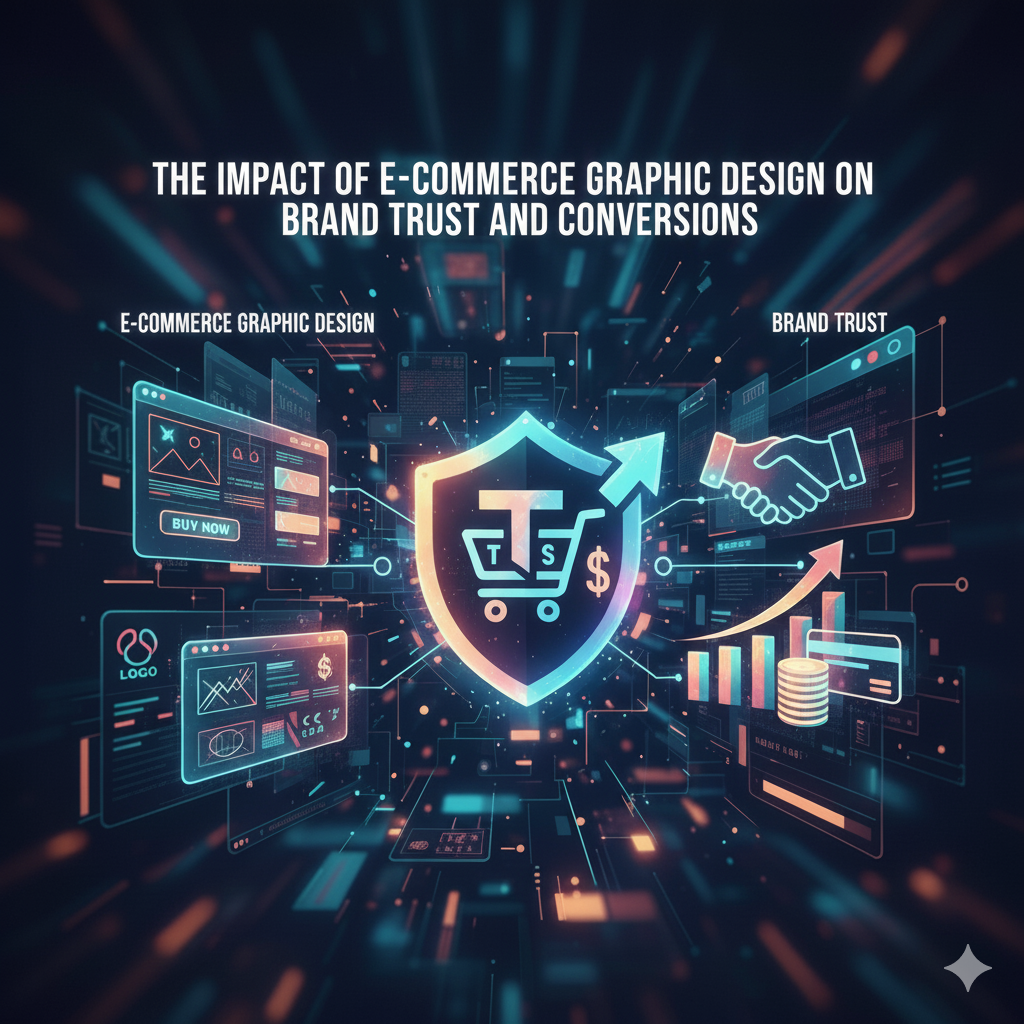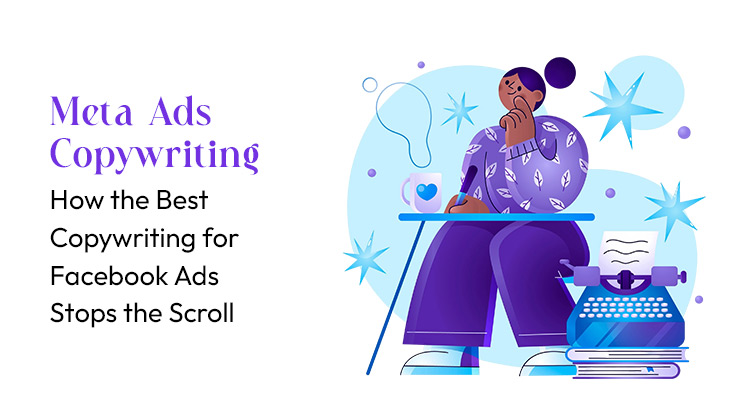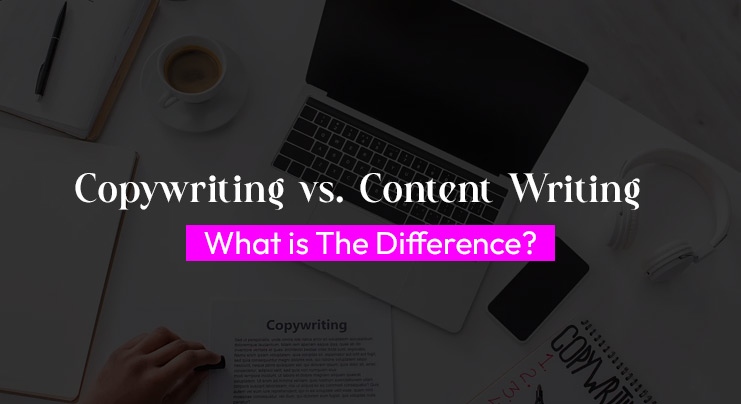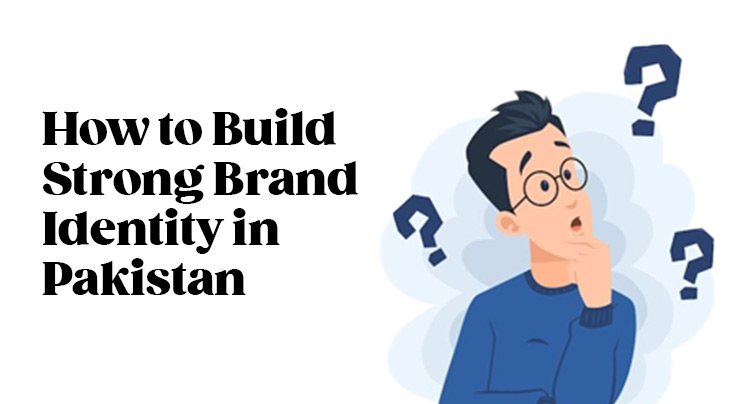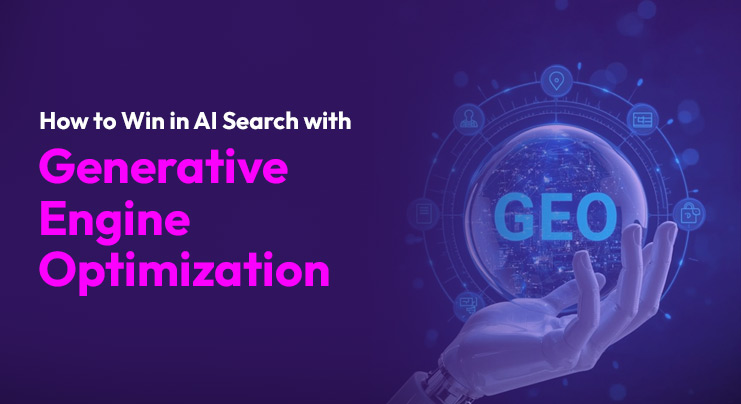In e-commerce, design isn’t just about looks; it’s about trust. Before reading a single word, customers judge your brand through visuals. From layout and colours to product images, your ecommerce graphic design decides whether visitors stay or leave. Studies show that 75% of users judge a brand’s credibility by its website design. That means your visuals aren’t decoration, they’re your first salesperson, shaping how customers perceive your brand and whether they buy.
This blog is for online store owners, marketers, and eCommerce designers who want to turn their visuals into a conversion tool. You’ll learn how great graphic design for eCommerce builds trust, improves user experience, and boosts sales, even without increasing traffic. If your store looks good but doesn’t sell well, this guide will show how strategic design choices can turn clicks into customers.
The Role of Graphic Design in E-commerce Success
The role of graphic design in e-commerce is to bridge emotion and usability, it’s how your visuals make people feel confident and act decisively. Every font, image, and button has the potential to either build or break trust.
When your design speaks consistency and clarity, your visitors subconsciously assume the same about your business operations, from packaging quality to delivery accuracy. This psychological connection between visuals and trust explains why professional graphic design for ecommerce directly impacts conversions.
Why Visuals Matter More Than You Think
- They define first impressions. A clean, cohesive layout reduces friction and builds confidence instantly.
- They build trust through familiarity. Consistent colors, logos, and imagery form recognition loops, the mind’s shortcut for reliability.
- They support user experience. Smart use of hierarchy, spacing, and CTA placement keeps users moving forward effortlessly.
- They influence perceived value. Good design makes your brand look premium, even before price comparison begins.
A cluttered, outdated website instantly lowers perceived credibility, even if your products are excellent. On the other hand, modern, consistent visuals signal that your store is organised, reliable, and transparent.
That’s why top-performing stores partner with ecommerce graphic design services that combine creativity with behavioral insights. At Fulfillit, our approach to graphic design ecommerce involves mapping the customer’s subconscious triggers, what they see, where they hesitate, and what builds their confidence, then designing visuals that guide them intuitively toward conversion.
The Psychology Behind E-commerce Graphic Design and Visual Trust
Humans don’t read first, they feel. Within 50 milliseconds, a user forms a subconscious opinion about your store’s credibility. This “visual trust signal” happens before a single word is read.
Here’s where graphic design in e-commerce plays its most powerful role, shaping emotions before logic. A well-structured design leverages psychology to communicate stability, safety, and professionalism at a glance.
The Cognitive Load Principle
When design is chaotic, too many colors, fonts, or elements, users feel mentally overloaded. Their brain associates this confusion with risk. On the flip side, minimalist, visually balanced layouts reduce cognitive load, making the experience feel effortless and safe. That’s why the best ecommerce graphic design uses simplicity as a form of persuasion.
Color and Consistency as Subconscious Trust Builders
- Blue creates a sense of reliability, perfect for checkout or payment visuals.
- Green signals success, eco-friendliness, and safety.
- Red evokes urgency, effective for limited-time offers.
- Black and white contrast communicate luxury and purity.
When these colors are used consistently, your brand becomes predictable, and predictability builds comfort.
Inconsistent color use, mismatched fonts, or inconsistent imagery (especially across social media, product pages, and checkout screens) break this psychological pattern, leading to doubt. In conversion terms, doubt = drop-off.
That’s why a professional ecommerce graphic designer understands that design isn’t about decoration, it’s about controlling perception.
The Benefits of E-commerce Graphic Design for Conversion and Brand Trust
The benefits of eCommerce graphic design go far beyond aesthetics, they’re measurable across traffic behavior, conversions, and customer loyalty.
| Metric | Without Professional Design | With Strategic E-commerce Graphic Design |
| Bounce Rate | 60–70% | ↓ 35–45% |
| Conversion Rate | 1–2% | ↑ 4–6% |
| Average Order Value | Flat or inconsistent | ↑ 20–25% with persuasive visuals |
| Brand Recall | Weak | 80% higher due to consistent visual identity |
| Return Rate | High | ↓ 30–40% with authentic product visuals |
How Design Drives Conversions
- Design Reduces Friction. Clean layouts, fast load visuals, and clear CTAs shorten the buying journey.
- Visuals Build Authority. Polished product graphics and branding imply reliability, especially for new visitors.
- Consistency Improves Recognition. Uniform branding across banners, ads, and product pages reinforces memory.
- Storytelling Creates Emotion. Visual narratives (before/after imagery, use-case graphics) boost empathy and conversion likelihood.
When shoppers see professional design, they don’t think “nice website.” They think “I trust this store.”
That’s the invisible power behind graphic design for ecommerce, it transforms visual harmony into commercial advantage.
Emotional Design: How Color, Layout, and Typography Drive Conversions
Every pixel on your store speaks emotion before logic. That’s why ecommerce graphic design isn’t only about looking beautiful, it’s about making buyers feel safe enough to act. Emotional design shapes perception, nudges buying behavior, and ultimately drives conversions.
Color Psychology: Turning Emotion into Action
Color is the fastest communicator in e-commerce. It influences up to 90% of first buying decisions, often before a customer even reads a word.
| Color | Emotion Triggered | E-commerce Usage |
| Blue | Trust, security, and calmness | Payment pages, product guarantees, and service-based brands |
| Red | Urgency, energy, and excitement | Sale banners, countdown offers, or limited-time discounts |
| Green | Growth, balance, eco-friendliness | Organic brands, sustainability messaging, checkout “Success” buttons |
| Black | Sophistication, power, and exclusivity | Luxury products, fashion, or high-end electronics |
| Orange | Friendliness and action | CTA buttons, onboarding prompts, or loyalty popups |
Brands that implement color strategically, not just aesthetically, experience 30–40% higher click-through rates on CTAs. This is why a smart ecommerce graphic designer treats color as conversion code.
Layout and Visual Flow: The Path That Builds Trust
Good graphic design for ecommerce leads the eye, not forces it. Every layout should tell a visual story, headline → product → CTA, without confusion or clutter.
- Above-the-fold clarity ensures users understand your offer immediately.
- Whitespace calms the mind and draws attention to high-priority sections.
- Symmetrical spacing and alignment make brands look professional and reliable.
When layout and flow are intuitive, users feel subconsciously guided rather than sold to, which dramatically improves conversion rate and session time.
Typography: The Silent Credibility Factor
Typography does more than decorate text, it anchors emotion. In ecommerce graphic design, typography should be:
- Readable (especially on mobile),
- Consistent across all pages,
- Aligned with brand tone (modern, classic, or minimalist).
For instance, sleek sans-serif fonts communicate innovation and accessibility (great for tech and lifestyle brands), while serif fonts suggest heritage and trust (ideal for high-end or traditional businesses). This is why the best ecommerce graphic design service never randomly selects fonts, it engineers a visual tone that mirrors brand credibility.
Visual Credibility: Product Imagery and Authentic Presentation
In e-commerce, customers can’t touch the product, they can only see it. This means graphic design in e commerce must eliminate uncertainty through visual truth.
High-Quality, Honest Imagery Builds Confidence
Professional imagery is not an expense; it’s a trust investment. Low-quality, inconsistent, or stock visuals subconsciously signal “risk.” But sharp, authentic product shots, showing real textures, dimensions, and lifestyle context, communicate quality and reduce hesitation.
According to Shopify data, authentic product imagery can reduce return rates by up to 40% because customers know what they’re getting. That’s the measurable impact of graphic design in e-commerce, less doubt, more conversions.
Multi-Angle and Context-Based Visuals
A powerful ecommerce graphic design company ensures visuals don’t just “show” products, they demonstrate usage. This includes:
- 360° rotation or zoomable views,
- Lifestyle photography (real environments),
- Comparison graphics (size, color, or usage scenarios), and
- AR product previews for immersive visualization.
When users see a product in relatable context, a lamp lighting a cozy bedroom, a jacket worn on a real person, the design activates trust and emotional relatability.
Consistency Across Platforms
Your Instagram ads, product pages, and checkout banners should look like they belong to one brand family. Consistency builds memory, and memory builds loyalty. That’s why graphic design services for ecommerce must include unified editing styles, aspect ratios, and tones across all visual assets.
When your visuals look cohesive everywhere, from Meta ads to email banners, you appear organized, stable, and dependable.
Designing for Transparency, Security, and Customer Assurance
Trust doesn’t come from words, it comes from what users see without being told. A reliable e commerce graphic design system integrates visual cues that assure security and transparency throughout the buyer journey.
Trust Badges and Security Signals
Adding trust symbols like SSL badges, “Secure Checkout” seals, and accepted payment logos (Visa, Mastercard, PayPal) is not decoration, it’s persuasion science. Data shows that adding security badges to checkout pages can increase conversions by 30–40%, especially for first-time customers.
Smart graphic design ecommerce layouts position these badges in high-visibility zones, near “Buy Now” buttons or final form fields, to reduce anxiety at the most sensitive stage: payment.
Visualizing Return, Refund, and Shipping Policies
Clear policy communication is one of the most underrated benefits of ecommerce graphic design. Instead of long paragraphs, top-performing brands visualize their promises:
- A circular arrow icon = free returns.
- A clock = same-day dispatch.
- A shield = quality guarantee.
This micro-visual transparency reassures customers that your brand is confident, organized, and trustworthy, even before they read the fine print.
Contact Visibility and Social Proof
Trust also depends on how reachable you appear. Placing contact details, chat icons, and testimonials in consistent visual formats boosts perceived legitimacy. Customer review carousels, real user photos, and case studies can lift conversion rates by up to 15%, according to Baymard research.
A well-structured ecommerce graphic designer knows that visuals of people using your product create a sense of community and reliability far stronger than copy alone.
That’s why Fulfillit integrates design, psychology, and conversion optimization, crafting visuals that prove your credibility instead of claiming it.
Mobile-First and Accessible E-commerce Graphic Design
More than 70% of online shoppers now buy directly through their smartphones. That means your visuals must be optimised not for a big desktop screen, but for a small, fast-scrolling, thumb-controlled environment.
Modern ecommerce graphic design begins with mobile-first thinking: simplicity, speed, and scannability. A design that looks beautiful on desktop but breaks on mobile doesn’t just hurt UX, it kills credibility.
Responsive Design and Speed Matter
A responsive layout automatically adapts to every screen size, from tablets to foldable devices, maintaining visual balance and readability. Studies show that even a one-second delay in load time can reduce conversions by up to 7%. That’s why a professional ecommerce graphic design company prioritizes:
- Compressed images (WebP/AVIF format),
- Minimal scripts and animations,
- Legible typography at mobile scale,
- And clickable CTAs designed for thumbs, not cursors.
Fast-loading, mobile-optimized visuals don’t just reduce bounce rates, they communicate operational excellence. When your store feels fast, customers feel safe spending.
Accessibility Builds Inclusive Trust
Accessibility is more than compliance; it’s an empathy-driven design strategy. Good graphic design ensures:
- Proper contrast ratios for text and visuals,
- Alt-text for every product image,
- Keyboard navigation and screen-reader support,
- Simplified forms with large tap zones.
These elements signal inclusivity, that your brand cares about everyone’s experience. Accessibility is, in essence, visual honesty, the kind that builds deep, long-term brand loyalty.
Visual Hierarchy on Mobile
On smaller screens, space is gold. A clear visual hierarchy, heading → product → price → CTA, eliminates confusion and helps users decide faster. That’s why the best ecommerce graphic design service always maps the scroll journey: ensuring your most persuasive visuals and trust signals appear early, above the fold.
Mobile-first design isn’t a trend, it’s the future baseline for every credible graphic design in e commerce system.
Post-Purchase Design: Turning Conversions into Lifelong Loyalty
The sale isn’t the end of the journey, it’s the start of trust. Great graphic design ecommerce strategies go beyond checkout, turning post-purchase interactions into powerful brand moments.
Branded Tracking and Delivery Design
When customers check their order status, what they see matters. A visually branded tracking page with your logo, color palette, and progress bar reassures them that their purchase is in safe hands. Adding friendly illustrations like “Your order is on its way” or “Delivered successfully” creates micro-joy and reinforces trust.
Top-performing stores use post-purchase design to drive repeat engagement, including:
- Product care infographics,
- Cross-sell visuals (“Pair this with…”), and
- Loyalty reward banners.
A strategic ecommerce graphic designer ensures even your order emails and delivery visuals look consistent, professional, confident, and aligned with your brand promise.
The Unboxing Experience: Physical Design Meets Digital Trust
Packaging is your offline website. The impact of graphic design in e-commerce extends into how customers feel when they open the box. High-quality packaging, branded inserts, and personalized thank-you notes all strengthen the trust loop, transforming a transaction into an experience.
For instance:
- A minimalist eco-friendly box signals sustainability.
- Custom tape or stickers reflect brand care.
- QR codes on inserts drive buyers back to the store for repurchase.
This tactile design storytelling increases retention and reduces post-purchase uncertainty. That’s why top ecommerce graphic design companies create cohesive systems, from online visuals to packaging aesthetics, to keep the trust chain unbroken.
Visual Communication for Refunds and Returns
Transparency doesn’t stop at checkout. Clear, visually guided return and refund flows (icons, arrows, timelines) lower anxiety and customer support load. When visuals simplify complex information, customers perceive your brand as organized and honest, the cornerstone of long-term trust.
In short, post-purchase design isn’t about aesthetics; it’s about reassurance. Every graphic touchpoint becomes a silent brand ambassador that says, “We’ve got you.”
The Future of E-commerce Graphic Design (2025–2030)
The next evolution of ecommerce graphic design will be powered by interactivity, personalization, and intelligent automation. What was once static will now adapt dynamically to every shopper’s behavior.
3D Visualization and AR Integration
The future of graphic design for ecommerce lies in immersion. Customers no longer want to imagine, they want to experience. 3D modeling and Augmented Reality (AR) allow users to:
- Rotate and explore products virtually,
- Visualize how items fit into their physical space (e.g., furniture or fashion), and
- Preview size, color, and dimensions before purchase.
These features are not gimmicks, they are conversion catalysts. AR-enabled stores see 65% higher purchase intent and 40% fewer returns, directly proving the benefits of ecommerce graphic design that merges technology and emotion.
Personalized, AI-Generated Visual Experiences
Tomorrow’s ecommerce graphic design companies will harness AI to generate real-time visual content personalized to each visitor, adjusting banners, product layouts, and CTAs based on behavior, location, or interest.
Imagine a homepage that changes dynamically for returning customers, showing their favorite product categories, preferred colors, and recently viewed items. This intelligent personalization boosts relevance, and relevance builds trust faster than any discount ever could.
Sustainability and Ethical Aesthetics
Modern consumers care as much about how you design as what you sell. Eco-conscious design, using earthy color palettes, recycled packaging visuals, and minimalistic layouts, signals brand integrity. This is where graphic design services for ecommerce evolve from decoration to advocacy, helping brands communicate their values visually.
Storytelling Through Motion and Micro-Interaction
In the next era of e commerce graphic design, motion will speak louder than words. Micro-animations, a smooth button hover, a loading bar that smiles, and a floating cart icon all contribute to a delightful, trustworthy digital atmosphere.
These subtle design moments humanize the buying journey and make your store feel alive, responsive, and customer-focused.
Why Choose Fulfillit as Your E-commerce Graphic Design Company
When it comes to conversion-focused ecommerce graphic design, Fulfillit stands at the intersection of creativity, strategy, and data. We don’t just design, we engineer trust. Our process connects every visual element to your buyer’s psychology, ensuring that every color, font, image, and layout contributes to measurable results.
Strategy-Driven Creativity
We believe design must serve purpose. Our team of expert ecommerce graphic designers starts every project with a deep analysis of your brand, audience, and conversion data. Whether it’s designing persuasive landing pages, conversion banners, or full Shopify storefronts, every creative decision is backed by insight, not guesswork.
Multi-Platform Consistency
We ensure your visual identity feels cohesive across every channel, website, Meta Ads, TikTok creatives, product packaging, and email marketing. This unified system builds recognition and trust, which directly boosts conversion rates and customer retention.
Seamless Collaboration and Execution
As a full-service ecommerce graphic design company, Fulfillit integrates graphics with your marketing, development, and content teams, delivering ready-to-launch visuals that load fast, look sharp, and sell better.
Our Expertise Includes:
- Full-funnel graphic design for ecommerce stores
- Product imagery, ad creatives, and lifestyle graphics
- Conversion-optimized website visuals and banners
- Brand identity systems (logos, typography, color palettes)
- Custom packaging and post-purchase design
- Motion and interactive design for digital storytelling
We don’t stop at aesthetics, we focus on results: lower bounce rates, higher trust, and consistently rising conversion percentages. That’s why clients across retail, fashion, skincare, and tech choose Fulfillit as their best ecommerce graphic design service partner.
Conclusion: Design is the New Conversion Engine
In today’s digital-first world, ecommerce graphic design isn’t just a creative choice, it’s a business weapon. Every button, photo, and visual detail influences whether a shopper clicks “Buy” or bounces.
Professional graphic design in e commerce transforms your store from a product catalog into a brand experience, one that looks credible, feels consistent, and performs flawlessly across every screen.
From emotional color theory to transparent visuals and post-purchase design, great design builds invisible trust, the kind that converts visitors into customers and customers into advocates.
When your visuals communicate honesty, reliability, and excellence, sales become a natural outcome of design. At Fulfillit, that’s exactly what we create, visual systems that sell.
FAQs
1. What is e-commerce graphic design?
Ecommerce graphic design is the process of creating visual elements, such as product images, banners, icons, layouts, and typography, that enhance the look, usability, and trustworthiness of an online store. It directly impacts how users perceive your brand and whether they complete a purchase.
2. Why is graphic design important in e-commerce?
The role of graphic design in e-commerce is to build trust, simplify navigation, and guide shoppers toward conversion. A clean, visually consistent design reduces hesitation, boosts engagement, and improves checkout completion rates.
3. What are the benefits of eCommerce graphic design for my store?
The benefits of eCommerce graphic design include increased credibility, higher conversion rates, improved brand recall, and reduced return rates. Visually clear product displays, trust badges, and optimized CTAs can elevate your store’s sales and user experience significantly.
4. How do I choose the right e-commerce graphic design company?
Choose an ecommerce graphic design company that understands both design psychology and conversion science. Look for a partner that offers end-to-end solutions, from strategy and brand identity to CRO-focused visuals, like Fulfillit.
5. Can graphic design improve Shopify or WooCommerce conversion rates?
Yes, high-quality graphic design services for ecommerce directly improve store conversions. From faster-loading visuals to optimized checkout designs, better graphics lead to better engagement, lower bounce rates, and higher average order values.


